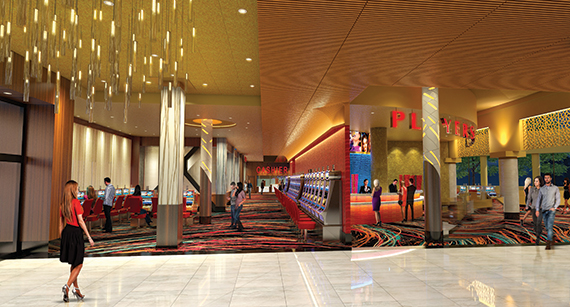Trending
Long Island makes room for new hotels
Occupancy rates in the area are high, but will there be enough demand for the added rooms?

In Long Island’s hotel and hospitality sector, there’s good news and bad news. The positive: a surge in new construction. The negative: a surge in new construction.
The market is busier on Long Island than it is nationally, with higher occupancy rates. There has also has been some recent significant investment sales activity in the hospitality sector. However, market watchers say that it’s unclear whether there will be sufficient demand for the hotel rooms that are slated to open this year.
“I’d say we’re cautiously optimistic,” said David Pennetta, executive director of the Long Island office of Cushman & Wakefield.
Certainly, recent numbers seem to present a mixed bag. On the one hand, occupancy rates are on the high side, back to pre-recession levels, and higher than the national average — 73.5percent in 2016 versus an average national occupancy of 65.5 percent, according to STR, a firm that tracks hotel data. And at $108.88, revenue per available room (RevPAR) is respectable.
“There appears to be pricing power in the market,” said Jan Freitag, senior vice president at STR. “We see about the same number of guests, but hotels are charging more.”
But that’s only part of the picture. From 2015 to 2016, occupancy rates were flat, registering only a 0.4 percent increase versus a 3.2 percent rise the year before, according to STR. As for RevPAR, it increased 4 percent year-over-year in 2016 compared to 6.5 percent the year before.
Against this backdrop, several hotels are under construction and expected to open this year. Furthest along is a $36 million, 165-room Hilton Garden Inn in Port Washington on the border of Roslyn in Nassau County. The hotel is expected to open in April, according to Paul Amoruso, who is developing the project with Larry Levine. Their joint venture is Roslyn O-S Hotel Partners.
Built on the site of a former recreational facility in the Harbor View Corporate Park, the property will offer several added attractions, according to Amoruso. One example: Guests will be able to check in using a smartphone, thus skipping the front desk. Shuttle buses will also be available to take guests to shops and restaurants in tony Roslyn.
Perhaps more important, the hotel has the advantage of having little competition. “We’re in a unique location,” Amoruso said.
 The other hotels, all in Suffolk County, include a $24 million, 131-room Marriott Residence Inn in Riverhead, a $16.8 million, 125-room Courtyard by Marriott in Central Islip and a $21.6 million, 124-room Hilton Homewood Suites in Ronkonkoma.
The other hotels, all in Suffolk County, include a $24 million, 131-room Marriott Residence Inn in Riverhead, a $16.8 million, 125-room Courtyard by Marriott in Central Islip and a $21.6 million, 124-room Hilton Homewood Suites in Ronkonkoma.
According to Lee Browning Sr., whose firm is developing a Courtyard Marriott in Lynbrook and a Riverhead Marriott Residence Inn on the same site of another hotel he owns, several hotels have gone up in the area in the eight years he’s spent getting financing for and building the Marriott Residence Inn.
“If I’d known then what it would look like today, I definitely would not have started another project in Riverhead,” he said. The 7-acre site includes a 114-room Hilton Garden built by Browning right before he embarked on the Marriott project.
Hotel construction on Long Island tends to be costly, and it is difficult to get financing. With major companies like Arrow Electronics, Forest Laboratories and OSI Pharmaceuticals leaving the area or reducing their presence, some banks question the need for more rooms.
“With corporate contraction, high taxes and difficult transportation, banks look at you and say, ‘Why would you want to build here?’” Amoruso said.
To get bank financing, developers need to put up at least 35 percent of total cost, according to Browning. Many banks are not even considering hotel funding now. “We’ve heard a lot about how difficult it is for hotels,” said Albina Reydman, a market analyst with CoStar Group. “A lot of banks have maxed out all their allocations for hotel financing.”
Tax incentives play a critical role in the ability to get funding. Browning, for example, received incentives from the Riverhead Industrial Development Agency for the Marriott in 2015. The 10-year tax abatement provides a 50 percent break for the first year, with successively smaller reductions until, by the last year, there will be a full assessment.
“It’s not a free ride,” Browning said. “But I doubt we would be able to build without these tax incentives.” They have also been important in his ability to attract bank financing, he added.
These properties are select hotels, which are smaller and provide fewer amenities than full-service establishments offer. They also cater to value-conscious business travelers, vacationers and what Amoruso calls “social” customers hosting, for example, a wedding or bar mitzvah at the site.
Still, as big companies continue to leave the area and the number of corporate guests shrinks, some real estate experts say there may not be enough demand for the new properties. “There could be an oversupply over the next couple of years in response to these deliveries,” Reydman said. That would slightly slow occupancy rates.
But she also predicts that room rates will continue to grow. Similarly, Mark van Stekelenburg, who heads the New York City office of PKF Consulting, a division of CBRE, expects room rates to at least hold steady. “We think there still is a shortage of hotel rooms for the amount of demand there is for Long Island,” he said.
There has also been significant activity in hotel sales. Two of the top 10 commercial properties sold on Long Island in the past year have been in the hospitality market, according to data analyzed by The Real Deal.
Over the summer, Navika Capital Group bought the 305-room Hilton Long Island/Huntington in Melville for $52.3 million from a joint venture including PGIM Real Estate and Dow Hotel Co.
In August, Delaware North purchased the Islandia Marriott Long Island hotel, now Jake’s 58 Hotel & Casino, from Columbia Sussex Corp. for $40.4 million. The property features not only a 227-room hotel and an expanded restaurant, but also the area’s only casino. Scheduled to open this winter, it will have 250 video lottery terminal machines, with more planned. Delaware North will also operate the gaming venue for Suffolk Regional Off-Track Betting Corp.




